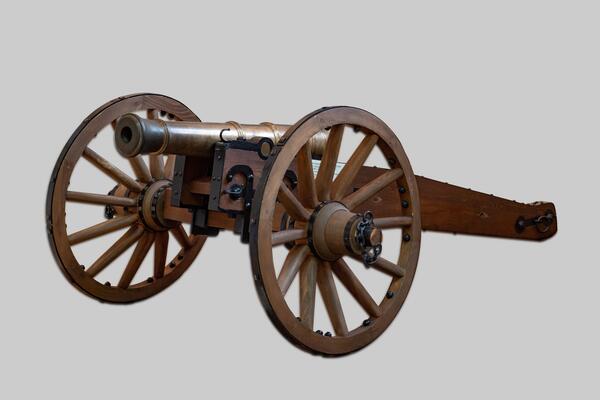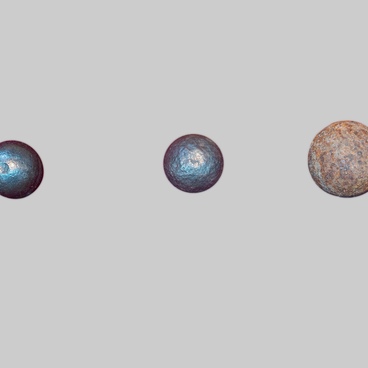Exact copies of one-pounder cast iron and bronze guns on field carriages that were in service in Kuznetsk were manufactured at ZSMK. The gun is the longest of all cannons. It has no chamber – a special channel for the propelling powder and is designed for firing mainly cannonballs and case shot.
A cylinder channel of such guns has a spherical bottom. The outer surface of the gun consists of three parts – blunt cones with their smaller bases facing the muzzles. Each part has its own name – muzzle, middle or swivel- where the swivels, or pivot pins are located, - and a breech piece. The latter usually had an emblem engraved on it which could help define that it belonged to the state.
One-pounder guns-falconets fired 500 g cannonballs and case shot. They were light field guns. Extra-small gun calibers – below three pounds – remained in the fortress artillery until early XIX century, but they discontinued to be used by the field artillery in Peter I time. Firing distance of such guns was about 300 m.
The gun model from the museum collection is installed on a field carriage. The carriage is a support where the weapon was installed for firing. The carriage was also used for transportation of the gun. Mountain artillery troops transported their guns on the backs of animals.
In accordance with military science of early XX century the carriages were divided into several categories. Sliding mounts or carriages without wheels are types of siege, fortification and coastal mortars. To carry those guns, temporary wheels were attached to the carriages. The coastal gun carriages were installed on revolving frames. Wheeled carriages were used both for firing and transportation to long distances. Those were field, siege, fortification guns and partially, mortar carriages. The carriages of quick firing guns or disappearing turret carriages were designed for firing from the turrets. The guns with such carriages could only be seen by the enemy at the time of aiming at the target and shooting. After the shot the gun was leveled down for reloading.
A cylinder channel of such guns has a spherical bottom. The outer surface of the gun consists of three parts – blunt cones with their smaller bases facing the muzzles. Each part has its own name – muzzle, middle or swivel- where the swivels, or pivot pins are located, - and a breech piece. The latter usually had an emblem engraved on it which could help define that it belonged to the state.
One-pounder guns-falconets fired 500 g cannonballs and case shot. They were light field guns. Extra-small gun calibers – below three pounds – remained in the fortress artillery until early XIX century, but they discontinued to be used by the field artillery in Peter I time. Firing distance of such guns was about 300 m.
The gun model from the museum collection is installed on a field carriage. The carriage is a support where the weapon was installed for firing. The carriage was also used for transportation of the gun. Mountain artillery troops transported their guns on the backs of animals.
In accordance with military science of early XX century the carriages were divided into several categories. Sliding mounts or carriages without wheels are types of siege, fortification and coastal mortars. To carry those guns, temporary wheels were attached to the carriages. The coastal gun carriages were installed on revolving frames. Wheeled carriages were used both for firing and transportation to long distances. Those were field, siege, fortification guns and partially, mortar carriages. The carriages of quick firing guns or disappearing turret carriages were designed for firing from the turrets. The guns with such carriages could only be seen by the enemy at the time of aiming at the target and shooting. After the shot the gun was leveled down for reloading.



